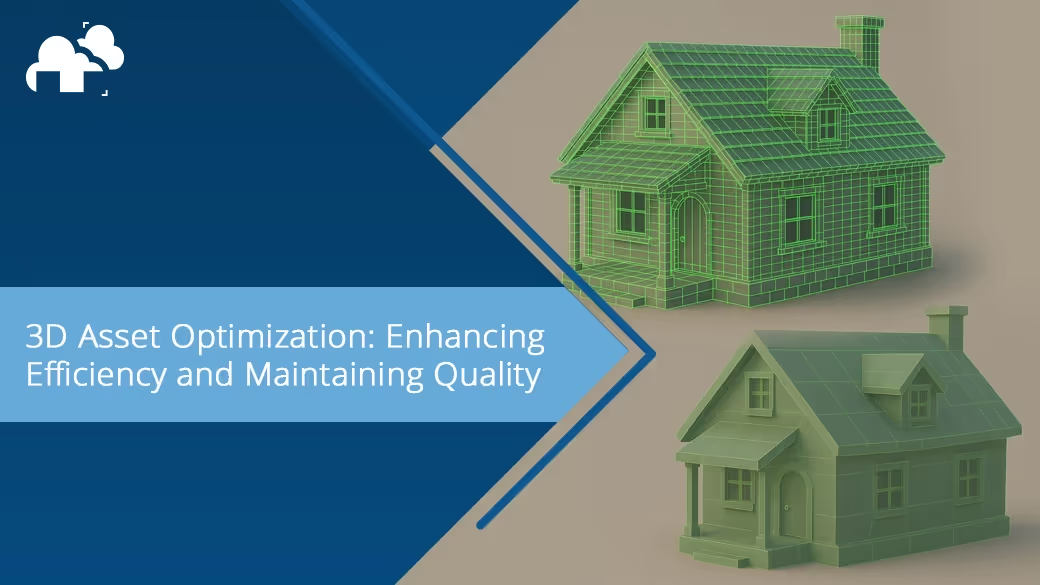
In the world of 3D modeling and rendering, one of the most important considerations for artists and developers is optimizing 3D assets. Whether you're working in game development, virtual reality (VR), augmented reality (AR), or any other real-time rendering application, asset optimization is critical. It's about reducing file sizes, minimizing rendering time, and improving the performance of your projects, without sacrificing the quality and fidelity that make the scene believable.
The process of 3D asset optimization requires a deep understanding of geometry, texture mapping, and the technologies that allow real-time applications to run smoothly. In this article, we'll explore the key techniques and concepts behind 3D asset optimization, including how to reduce polygon count, compress textures, and select the right formats to ensure the best performance without compromising visual quality.
3D asset optimization is the process of streamlining a 3D model or asset to improve its performance during rendering, while still retaining as much of the visual fidelity as possible. This involves multiple aspects of 3D design, from geometry and texture to the file format, and can significantly impact the load time and the responsiveness of applications such as games, AR, and VR experiences.
The challenge lies in finding the sweet spot where the 3D asset is not only efficient but also visually appealing, avoiding the creation of overly complex models that can lead to slower performance, longer load times, and higher memory consumption. Optimized assets reduce the computational burden on the system, ensuring that the real-time rendering remains smooth and responsive, even in complex scenes.
There are several crucial elements to consider when optimizing a 3D asset. These include:
Polygons are the fundamental building blocks of any 3D model. A model made up of millions of polygons can look stunning in terms of detail but will place a heavy strain on rendering engines, especially when multiple objects are present in a scene. Reducing the polygon count without sacrificing detail is a core principle of optimization. There are a variety of methods for reducing polygon count, including:
By focusing on maintaining the necessary level of detail while optimizing the mesh's topology, artists can significantly reduce the rendering load.
Textures are another key aspect of 3D asset optimization. Large texture maps can drastically increase file sizes and the time it takes to load a scene. To optimize textures, consider the following:
By optimizing textures, you can reduce the impact on memory and improve the real-time rendering speed of your assets.
File formats are another aspect of asset optimization that can affect performance. Different formats are suited to different purposes, so understanding when to use each one is key. Here are some popular file formats and their uses in asset optimization:
When selecting the file format, consider the platform or software being used, and choose a format that offers a balance of size, compatibility, and features required for your project.
Draw calls refer to the number of times a rendering engine must draw an object in a scene. Too many draw calls can drastically reduce performance, especially in real-time applications. To optimize draw calls:
For animated assets, optimization is similar to optimizing for 3D models in general. It is important to simplify and reduce shapes when complex geometry is unnecessary, as the more complex the geometry, the more the impact on performance where things can get heavier. Complex or overly complex animations can also slow down performance so it is also important to have simple and efficient set ups. Another option that animators can do is to bake animations to improve performance without sacrificing animation quality.
Whether you're using Autodesk Maya, Blender, or 3ds Max, asset optimization is a key workflow to ensure your 3D models perform well in real-time applications. By using these tools in your 3D software, you can ensure that your assets remain optimized for real-time performance, without sacrificing the artistic quality of the final render. Here's how you can approach optimization in popular 3D software:
Blender offers a wide array of optimization tools, including decimation modifiers, the ability to create texture atlases, and the Texel Density Checker addon. By using these tools effectively, you can easily manage your 3D assets' complexity and texture mapping.
In Autodesk Maya, tools like the polygon reduction tool, along with LOD grouping and texture baking, can help reduce asset complexity. Maya's robust rigging and animation tools also allow for efficient bone management and skinning techniques.
3ds Max has a variety of features that support asset optimization, including its ability to create LODs and support for efficient texture mapping. It’s non-destructive workflow is especially helpful for optimization as well and for making changes to models.
3D asset optimization is an essential skill for 3D artists working in industries such as film, gaming, AR, VR, real-time rendering, and more. By focusing on reducing polygon count, optimizing textures, selecting the right file formats, and minimizing draw calls, artists can create high-performing assets that maintain their visual fidelity. Remember that optimization is about striking a balance between performance and quality, ensuring your 3D assets look great while running smoothly in any environment.